Which is the best option between all terrain vs. mud-terrain tires? This is a simple question. Yet there is no straightforward answer to this. Because choosing a tire for your vehicle depends on a lot of factors.
As a result, we have come up with this post after based on our experience and a number of tests.
We will be comparing all-terrain tires vs mud-terrain tires considering various vital attributes. So that you can make an easy and wise decision for choosing between mud-terrain (M/T) and all-terrain (A/T) tires.
Depending on Driving Conditions
Tarmac – All-Terrain vs Mud-Terrain
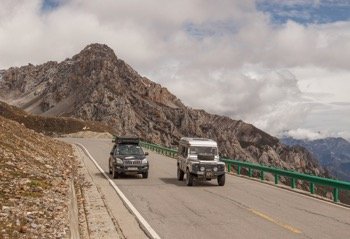
Frankly, the best option in tarmac is an all-terrain tire. All-terrain tires are made with closely spaced tread blocks, which translates into a low void ratio.
Because of that, A/T tires offer a comfortable and quiet ride on tarmac compared to mud-terrain tires.
Conversely, M/T tires would not be as suitable for tarmac as they will vibrate and make a whirring sound all the time.
Rain (on tarmac) – All-Terrain vs Mud-Terrain

Once again, the best all-terrain highway tire would be the winner in this case.
Most good-quality all-terrain tires would be equipped with sipes. These are tiny groves that are found all over the tread blocks.
These sipes are responsible for increased grip in wet conditions. Plus, these can also help shed water very well from under the tire.
As a result, A/T tires would be the better choice for wet tarmac in rainy conditions.
Sand – All-Terrain vs Mud-Terrain

For driving in sand, you need to find a tire with a larger footprint.
Also, it should have tighter tread blocks so that your vehicle won’t dig you down instead of taking your forward.
Conversely, the highly aggressive tread design and high grip that a mud-terrain tire comes with can be a problem to move you forward in the sand. The aggressive block basically dig into the sand, eventually causing the vehicle to stuck.
So, for a good balance of floatation and grip in the sand, a set of A/T tires would be the perfect fit for sandy terrain.
Mud – All-Terrain vs Mud-Terrain
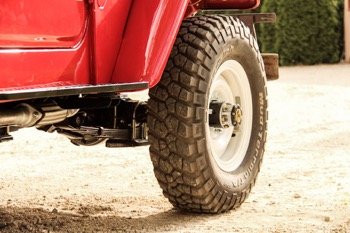
You might have already guessed that mud-terrain tires are the most suitable option when it comes to driving in the mud.
These tires come with larger spaces between the tread blocks.
As a result, they can clean themselves better than all-terrain tires.
These tires have a very intense tread design that translates into an aggressive grip in extreme conditions like muddy or rocky roads. So, if you are looking for a set of tires for driving in muddy terrain, the best option would be, of course, to go with M/T tires.
Rock Crawling – All-Terrain vs Mud-Terrain
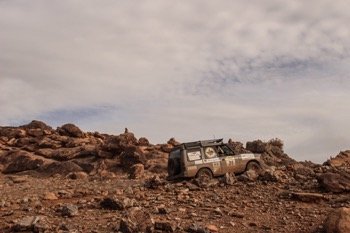
If you have to drive in an area where there are chunky rocks, loose dirt, ledges, and steep slopes to climb, then you should go with M/T tires.
Wherever intense grip is needed, you should choose a mud-terrain tire.
Conversely, if the terrain is a mix of sand, small rocks, and loose dirt, then an all-terrain tire would be the ideal pick.
Snow – All-Terrain vs Mud-Terrain
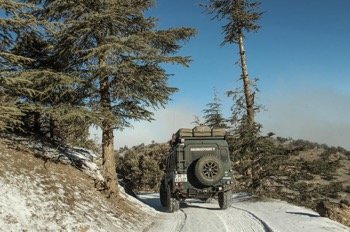
When comparing mud-terrain and all-terrain tires in terms of driving in snow, the all-terrain tires would be the champion.
Because of the compact and low void ratio in the tread blocks, snow will find a hard time to pack into an all-terrain tire.
In short, snow and mud tires don’t go well together.
Noise and Vibration
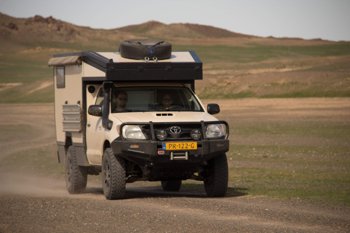
Mud-terrain tires are notorious for their road noise. Admittedly, most modern mud-terrain tires are a bit quieter compared to the older ones.
Still, an all-terrain tire will be quieter on the road compared to a M/T tire.
Also, the older a mud-terrain tire turns, the noisier it becomes. So, if you want a comfortable and less-noisy ride, you should opt for A/T tires.
Weight and Fuel Consumption
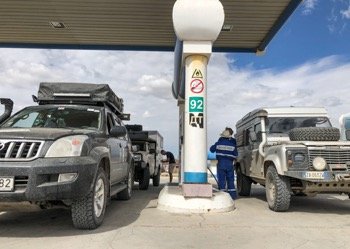
Mud-terrain tires tend to be heavier than all-terrain tires. So, they are resistant to punctures and can take a beating in extreme conditions.
However, more weight translates into more fuel consumption and less payload.
Plus, because of the difference in tread pattern and footprint size, all-terrain tires have less-rolling resistance compared to their counterpart. So, if you want better fuel economy and less weight, then you have to go with all-terrain tires.
Life Expectancy
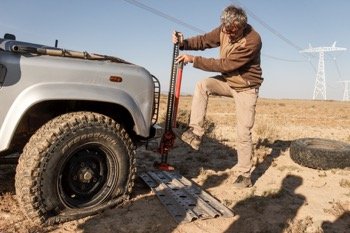
The life expectancy of a tire depends on many factors like vehicle weight, driving conditions, tire rotation & alignment, air pressure, and so forth.
Still, all-terrain tires would last longer compared to mud-terrain tires overall. So, if you want longer tread life and long-lasting performance, all-terrain tires would be the way to go. Unless you basically only drive on mud. Which is rarely the case.
FAQ
Should I get mud terrain or all terrain?
The answer to this question depends on the type of road you will be driving on frequently. If you think that you will be traveling through muddy and rocky roads where serious off-road traction is necessary, you should get mud-terrain tires.
However, if you will be driving both on and off-road then the all-terrain tire would be the best choice.
All-terrain tires are capable of handling all types of terrains such as dirt roads, sand, gravel, rocky roads, and more. They are also less noisy compared to their alternative.
Our advice is that you should get mud-terrain tires if you drive predominantly on dirt roads that often get muddy, and therefore you need a tool (in this case your tires) that was specifically designed for the job (the job of getting from A to B through difficult muddy terrain)
What is the difference between mud-terrain and all-terrain?
As the names suggest, both of these types of tries are made for different types of terrains.
First off, the mud-terrain tires are specifically made for driving on muddy and rocky roads. They are heavy, hard, and have a very aggressive grip, designed for muddy surfaces.
At the same time, they tend to produce loud road noise while on the highway.
Plus, these tires come with a higher void ratio on the tread blocks and have aggressive tread blocks. As a result, they tend to self-clean better than all-terrain tires.
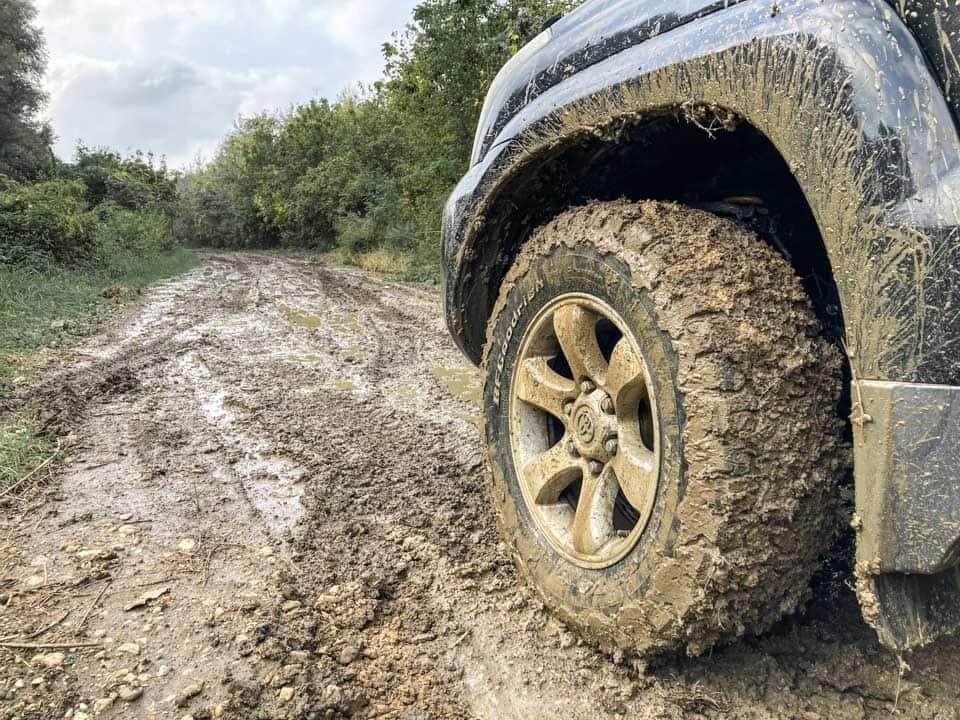
As opposed to mud-terrain tires, all-terrain tires cannot clear mud from between the blocks, therefore, it can lose traction completely.
On the other hand, all-terrain tires are suitable for most types of terrains. They are less noisy.
All-terrain tires come with a low void ratio on the tread blocks. So, they also save a lot of fuel and will last longer compared to the best mud tires for a truck.
Overall, all-terrain tires are better if you drive both on and off-road. Simply put, M/T tires are the better option if you have to tackle muddy roads frequently.
Are mud-terrain tires good on the road?
In short, mud-terrain tires are not good on the road. There are a few drawbacks of these tires when it comes to driving on the highway.
First, they are very noisy. Second, they tend to last shorter compared to all-terrain tires.
In addition to that, these tires consume a lot more fuel compared to all-terrain tires. So, if you want tires for driving on-road, you should go with all-terrain tires instead of their counterpart.
How long do mud tires last on the road?
All good brands will offer a treadlife warranty on their tires. So, you have to keep an eye on that to get an idea of the life expectancy of your mud tire.
Typically, a good-quality mud-terrain tire should last for about 40,000 to 50,000 miles. As always, it all will depend on various external factors like driving conditions, vehicle weight, and so on.
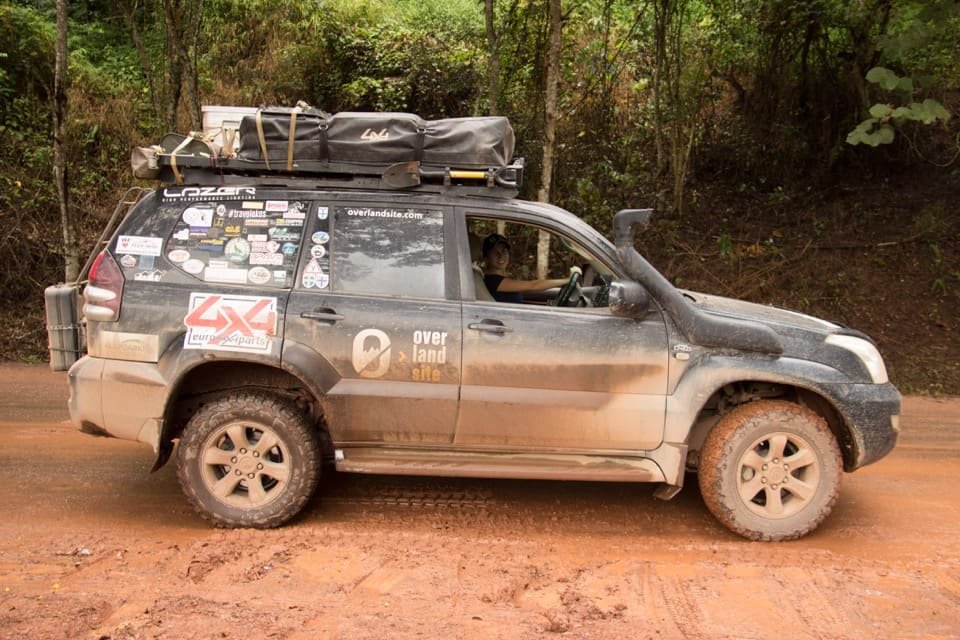
Conclusion
Simply put, for everyday use, the winner is the all-terrain tire. If you are looking for a set of tires that are versatile in any driving conditions, you should go with the all-terrain tire.
On the contrary, if you drive predominantly in extreme off-road conditions with muddy terrain (which is rarely the case), you could go with mud-terrain tires.
Thus, choosing the winner between mud-terrain tires vs all-terrain depends on your preference and driving conditions, but chances are, you’re better off with an all-terrain tire.
We at OverlandSite ended up fitting both our rigs with All-Terrain tires.
To sum up:
- if you’re an avid off-roader who wants to tackle very difficult terrain all the time; or
- if you live in an area where you need to drive on muddy roads, muddy conditions all the time; or
- if you’re planning a long overlanding adventure and there are some sections that you consider to be really difficult and could be life-saving to have aggressive grip because you will absolutely have to get through that one given place,
then buy mud-terrain tires.
If none of the above three points are true, then buy all-terrain tires.

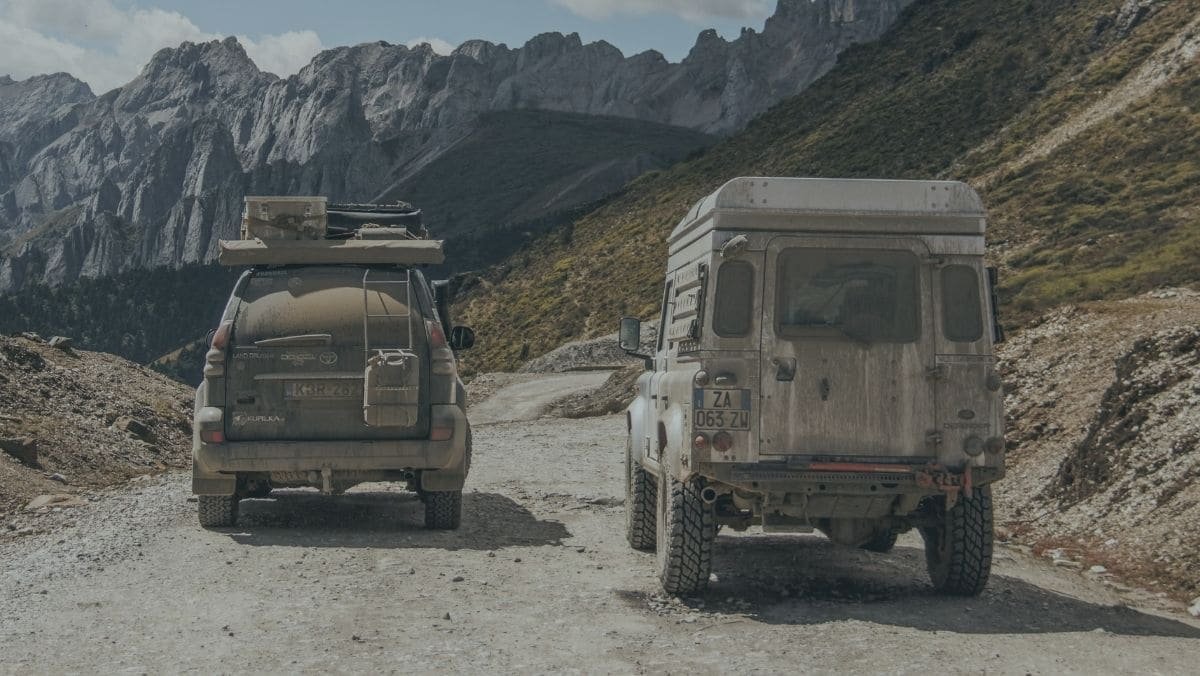
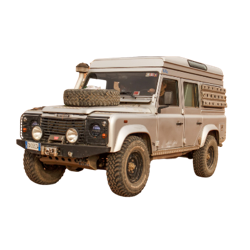
I’m just completing this comparison article you made on M/T Vs A/T tires and I can admit it is loaded with everything an Overlander should know about those two tire models. How you run the step-by-step comparison makes the thing simple and easy to understand.